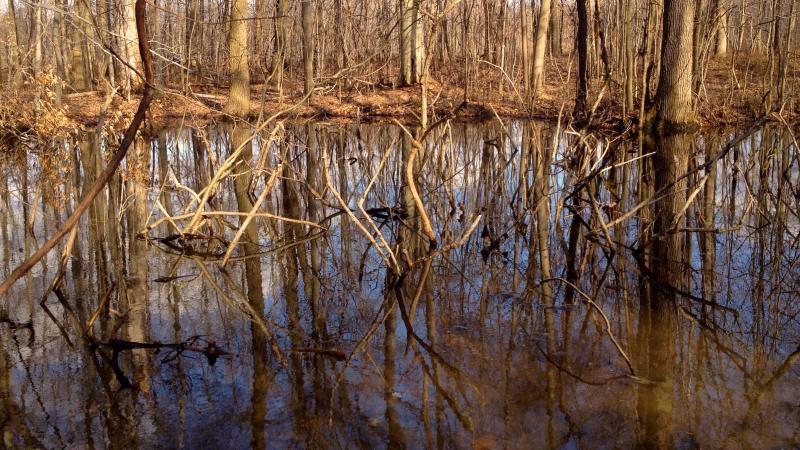October 13, 2017

[The Jefferson Project at Lake George is conducting ongoing research into how human activities may be affecting the lake and surrounding wetlands. This guest blog by Aaron Stoler, a post-doctoral research associate in the lab of Jefferson Project Director Rick Relyea, summarizes recent research published in the journal Environmental Pollution. The Jefferson Project is a collaboration between Rensselaer, IBM Research, and The FUND for Lake George, founded to develop a new model for technologically enabled environmental monitoring and prediction to understand and protect the Lake George ecosystem and freshwater ecosystems around the world.]
What did you want to know?
Chemical contamination is common in nature. For example, pesticides are frequently applied to homes, gardens, farms, and forests to control native and non-native pest species. However, pesticides can move into aquatic ecosystems, such as wetlands, and have unexpected effects. At the same time, changing species composition in our forests can also affect wetlands as they drop their leaves into the water. These leaves serve as food for many organisms and different leaf species contain different suites of chemicals. Our goal was to understand how these two factors might interact.
How did you go about it?
We conducted a large, outdoor experiment using 48 tanks that each contained 130 gallons of water. To each tank, we added black oak, elm, or red maple leaves. To create a food web that is representative of wetlands found throughout the Lake George watershed, we added bacteria, fungi, algae, two tadpole species (gray treefrogs and green frogs), amphipods, and zooplankton. We then applied the commonly used insecticide carbaryl (commercially name: Sevin®) at environmentally relevant concentrations and frequencies (no carbaryl added, weekly additions of 10 micrograms per liter (µg / L), a single early-season addition of 50 µg / L, and a single late-season addition of 50 µg / L). We followed the growth and development of all organisms for 1.5 months.
What did you learn?
We discovered that the tree leaves and the insecticide both affected the wetland food web. Red maple and elm leaves, which decompose rapidly, caused greater growth of algae, tadpoles, and amphipods than oak leaves, which decompose slowly. Regardless of leaf species, carbaryl induced a sharp decline in the abundance of amphipods and some zooplankton species, and this led to an increase in floating algae. For the tadpoles, leaf species and carbaryl showed interactive effects. For gray treefrog tadpoles, carbaryl caused 8–13% lower survival when elm or maple leaves were present, but not when oak leaves were present. For green frog tadpoles, carbaryl caused lower growth when oak or maple leaves were present, but not when elm leaves were present. Collectively, these results underscore the fact that commonly used pesticides can have interactive effects with the leaf inputs from changing forests. More generally, it demonstrates that different human impacts commonly have interactive effects on aquatic ecosystems.
The research, titled “Effects of a common insecticide on wetland communities with varying quality of leaf litter inputs,” can be found at: doi/10.1016/j.envpol.2017.04.019
